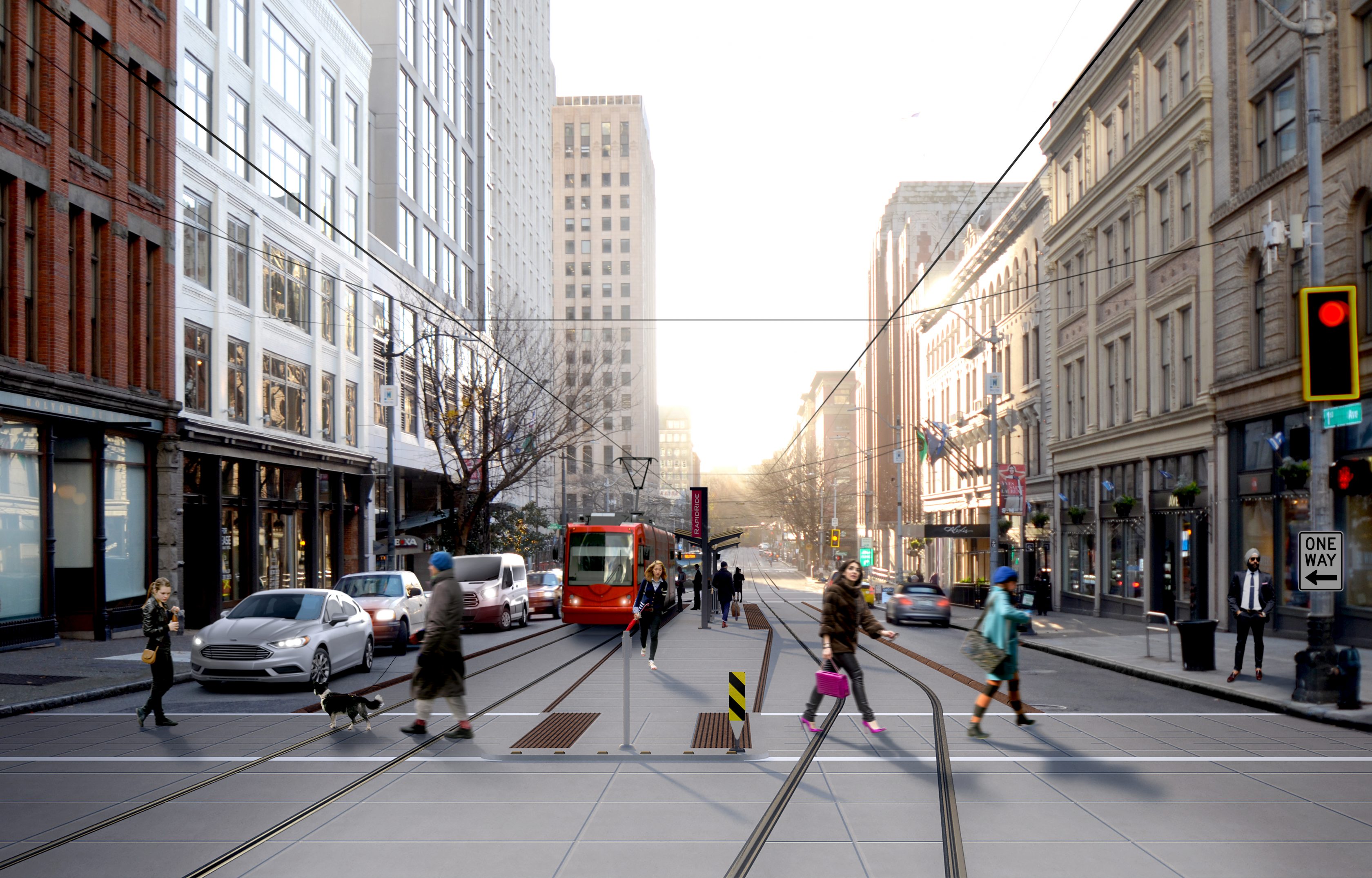News
Mayor raises dubious engineering concerns for Center City Connector
Posted on

This piece was originally published by Seattle Transit Blog on July 21, 2018.
The fate of the Center City Connector (CCC) is still undecided, but Mayor Jenny Durkan may have tipped her hand towards canceling the project.
A release sent out by Durkan’s office last week explained why the mayor’s decision has been delayed. An analysis of the project by consulting firm KPMG has yet to be completed, despite an initial deadline for delivery in late June. The release follows a similarly skeptical note written by Councilmember Lisa Herbold, a longtime CCC critic, in her weekly constituent letter.
“In August, it is hoped that KPMG will finalize their report to provide their independent analysis of the project,” the release said. The mayor will presumably make a final decision at that point. The release also suggests that the mayor could reopen the yearslong Center City Connector project design phase that selected a streetcar in the first place:
“Mayor Durkan believes we need better transit options along First Avenue and is committed to transit mobility and connectivity in this critical corridor. She has also asked SDOT to evaluate additional mobility alternatives in order to understand the transportation benefits that would accrue from either a streetcar or an alternative mode of transit.”
The release raised several critiques of the streetcar project, most notably about the size and operability of the tram vehicles that SDOT intends to procure for the project.
The mayor’s office wrote in a release that the much delayed, still unseen audit of the project by consulting firm KPMG “was much more complex than initially expected” as it required “the review of thousands of estimates, design materials and correspondence.”
At the same time, the release says that “concurrently with KPMG’s review, the Durkan Administration has also learned that the streetcar vehicles procured for the C3 are heavier, longer and wider than the existing SLU and First Hill streetcars.”

A low floor tram in service in Helsinki. Credit: LHOON.
However, the size of the vehicles is easily explained: they’re low floor vehicles designed to help people with disabilities load. That feature makes vehicles them inherently heavier than the vehicles currently on the streetcar network; the vehicles are increasingly common rolling stock for tram systems across the world. The release also raises the question of whether the vehicles have the correct gauge. As best as anyone can tell from the contracts SDOT executed for the vehicles, the vehicles should fit the track.
SDOT’s Director of Transit and Mobility, Andrew Glass Hastings, declined to comment on the mayor’s concerns.
Downtown groups who supported the mayor during her election campaign, like the Downtown Seattle Association and Alliance for Pioneer Square, are growing increasingly restive over the delayed project.
Transit and streetcar advocates have said that the concerns raised in the release are overblown. They argue that the questions about vehicle size are routine concerns that are typically addressed in the engineering phase of construction, and that the mayor is essentially engaging in concern trolling.
“A connected streetcar network remains a critical investment for our center city—which in the last year alone absorbed 20% of all business district development in the United States and continues to absorb the lion’s share of Seattle’s new residents,” said Don Blakeney, the Downtown Seattle Association’s VP of advocacy.
“We’ve heard concerns from the Mayor about streetcar hardware and project costs. These are issues that call out for engineering solutions and not shelving the streetcar altogether. As a part of a coalition of community leaders, we remain committed to helping the Mayor find solutions to get this critical connection completed.”